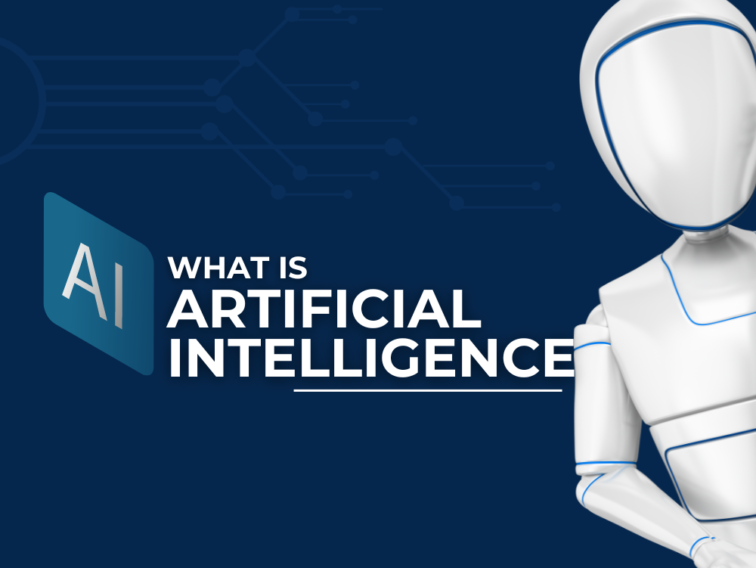Today, I’d like to share with you on Artificial Intelligence and how it is changing the world.
Artificial Intelligence (AI) refers to the development of computer systems that can perform tasks that typically require human intelligence, such as visual perception, speech recognition, decision-making, and natural language processing. AI systems are designed to learn and improve over time through a process known as machine learning.
The potential applications of AI are numerous and diverse, ranging from healthcare to finance, transportation to education, and almost everything. By automating routine tasks and augmenting human decision-making, AI has the potential to improve efficiency, productivity, and safety across a wide range of industries.
One of the key ways in which AI is changing the world is through its ability to process and analyze vast amounts of data. With the explosion of digital information in recent years, AI systems are becoming increasingly important for making sense of this data and extracting valuable insights.
Another way in which AI is transforming the world is through its ability to automate routine tasks and augment human decision-making. This has the potential to free up valuable time and resources, allowing us to focus on more complex and creative tasks.
However, as with any technology, there are also concerns about the impact of AI on society. For example, there are concerns about the potential for AI to exacerbate inequality, as those who have access to the technology may have a significant advantage over those who do not.
There are also concerns about the potential for AI to be used for malicious purposes, such as cyber-attacks or the creation of autonomous weapons.
You might be wondering how AI works.
AI systems work by leveraging advanced algorithms and computational power to process data and make intelligent decisions or perform tasks.
Here’s a high-level overview of how AI works:
- Data Collection: AI systems require large amounts of data to learn and make accurate predictions. This data can be in the form of text, images, audio, or any other relevant input.
- Data Preprocessing: Before feeding the data into an AI model, it often needs to be preprocessed. This involves cleaning the data, removing noise or outliers, and transforming it into a suitable format for analysis.
- Model Training: AI models are trained using machine learning techniques. The training process involves feeding the prepared data into the model and allowing it to learn patterns and relationships. The model adjusts its internal parameters iteratively to minimize errors or maximize performance on a specific task. The most commonly used machine learning methods include supervised learning, unsupervised learning, and reinforcement learning.
Supervised Learning: In supervised learning, the model learns from labeled examples, where the input data is associated with known output labels. The model tries to find the relationship between the input and output, allowing it to make predictions on new, unseen data.
Unsupervised Learning: In unsupervised learning, the model learns patterns and structures in the data without explicit labels. The goal is to discover hidden patterns, clusters, or relationships within the data.
Reinforcement Learning: Reinforcement learning involves training an AI agent to interact with an environment and learn through trial and error. The agent receives rewards or penalties based on its actions and adjusts its behavior to maximize the cumulative rewards.
- Model Evaluation: Once the model is trained, it needs to be evaluated to assess its performance. This is typically done using a separate set of data called a test or validation set. The model’s predictions or outputs are compared to the ground truth labels or desired outcomes to measure its accuracy and effectiveness.
- Model Deployment: After successful evaluation, the trained AI model can be deployed to perform tasks in real-world applications. This could involve integrating the model into a software system, creating a chatbot, developing autonomous vehicles, or applying AI algorithms to various domains.
- Continuous Learning and Improvement: AI models can be further enhanced through continuous learning and improvement. By collecting new data, retraining the model, and incorporating user feedback, AI systems can adapt and improve their performance over time.
It’s important to note that AI is a broad field, and different AI approaches and techniques may have unique workings depending on the specific problem or task they aim to solve. And as we continue to develop and refine AI systems, it will be important to ensure that we use this technology in ways that benefit society as a whole.
Becoming an AI expert requires a combination of foundational knowledge in mathematics, programming, and machine learning, as well as practical experience in applying AI techniques.
Here are some key areas to focus on:
Mathematics: Having a strong foundation in mathematics is crucial for understanding the underlying principles of AI. Key areas to study include linear algebra, calculus, probability theory, and statistics. These concepts form the basis for many machine learning algorithms and optimization techniques.
Programming: Proficiency in programming is essential for implementing AI algorithms and working with data. Python is widely used in the AI community due to its extensive libraries and frameworks for machine learning, such as TensorFlow, PyTorch, and scikit-learn. Familiarize yourself with Python and learn how to write efficient and well-structured code.
Machine Learning: Gain a solid understanding of machine learning algorithms, techniques, and concepts. Study supervised learning (classification, regression), unsupervised learning (clustering, dimensionality reduction), and reinforcement learning. Learn about model evaluation, feature engineering, and hyperparameter tuning. Understand the different types of neural networks, such as convolutional neural networks (CNNs) for image analysis or recurrent neural networks (RNNs) for sequential data.
Deep Learning: Deep learning is a subset of machine learning that focuses on neural networks with multiple layers. Study deep learning architectures like deep neural networks (DNNs), convolutional neural networks (CNNs), recurrent neural networks (RNNs), and generative adversarial networks (GANs). Understand concepts like backpropagation, activation functions, regularization, and optimization algorithms.
Data Handling: Learn how to work with and manipulate data effectively. Study data preprocessing techniques, data cleaning, feature selection, and handling missing data. Explore methods for data visualization and exploratory data analysis.
Real-World Applications: Gain practical experience by working on real-world AI projects or participating in Kaggle (kaggle.com) competitions. This hands-on experience will help you understand the challenges and nuances of applying AI techniques to different domains.
Continuous Learning: Keep up with the latest advancements and research in the field of AI. Follow conferences, read research papers, and join online communities and forums to stay updated on the latest trends and developments.
Remember that becoming an AI expert is a continuous learning journey. As the field evolves rapidly, staying curious, practicing regularly, and engaging with the AI community will help you refine your skills and deepen your expertise.




